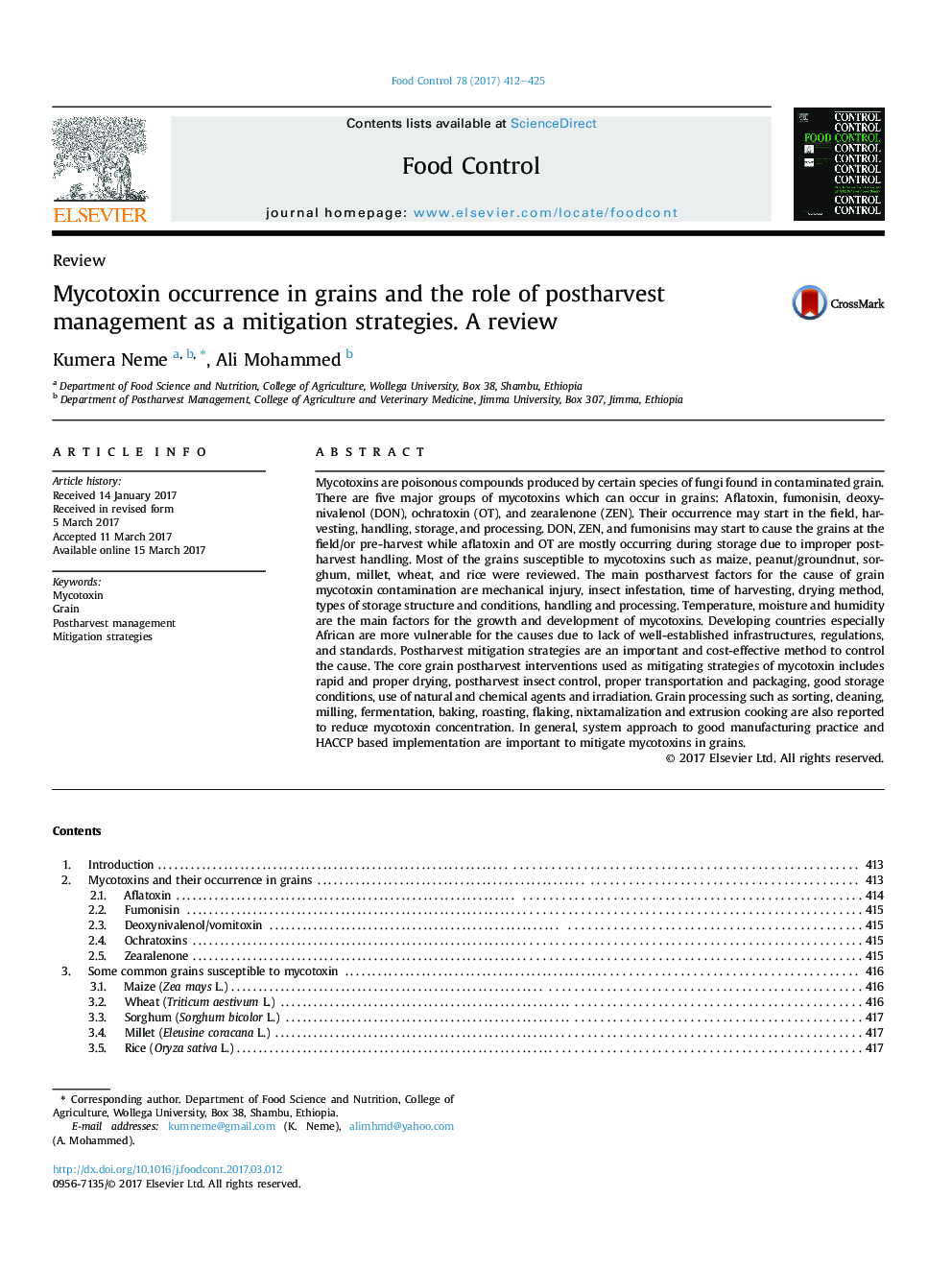| کد مقاله | کد نشریه | سال انتشار | مقاله انگلیسی | نسخه تمام متن |
|---|---|---|---|---|
| 5767532 | 1628386 | 2017 | 14 صفحه PDF | دانلود رایگان |
عنوان انگلیسی مقاله ISI
Mycotoxin occurrence in grains and the role of postharvest management as a mitigation strategies. A review
ترجمه فارسی عنوان
وقوع مایکوتوکسین در غلات و نقش مدیریت بعد از برداشت به عنوان یک راهبرد کاهش دهنده. بازنگری
دانلود مقاله + سفارش ترجمه
دانلود مقاله ISI انگلیسی
رایگان برای ایرانیان
کلمات کلیدی
مایکوتوکسین، غلات، مدیریت پس از فروش، استراتژی های کاهش،
موضوعات مرتبط
علوم زیستی و بیوفناوری
علوم کشاورزی و بیولوژیک
دانش تغذیه
چکیده انگلیسی
Mycotoxins are poisonous compounds produced by certain species of fungi found in contaminated grain. There are five major groups of mycotoxins which can occur in grains: Aflatoxin, fumonisin, deoxynivalenol (DON), ochratoxin (OT), and zearalenone (ZEN). Their occurrence may start in the field, harvesting, handling, storage, and processing. DON, ZEN, and fumonisins may start to cause the grains at the field/or pre-harvest while aflatoxin and OT are mostly occurring during storage due to improper postharvest handling. Most of the grains susceptible to mycotoxins such as maize, peanut/groundnut, sorghum, millet, wheat, and rice were reviewed. The main postharvest factors for the cause of grain mycotoxin contamination are mechanical injury, insect infestation, time of harvesting, drying method, types of storage structure and conditions, handling and processing. Temperature, moisture and humidity are the main factors for the growth and development of mycotoxins. Developing countries especially African are more vulnerable for the causes due to lack of well-established infrastructures, regulations, and standards. Postharvest mitigation strategies are an important and cost-effective method to control the cause. The core grain postharvest interventions used as mitigating strategies of mycotoxin includes rapid and proper drying, postharvest insect control, proper transportation and packaging, good storage conditions, use of natural and chemical agents and irradiation. Grain processing such as sorting, cleaning, milling, fermentation, baking, roasting, flaking, nixtamalization and extrusion cooking are also reported to reduce mycotoxin concentration. In general, system approach to good manufacturing practice and HACCP based implementation are important to mitigate mycotoxins in grains.
ناشر
Database: Elsevier - ScienceDirect (ساینس دایرکت)
Journal: Food Control - Volume 78, August 2017, Pages 412-425
Journal: Food Control - Volume 78, August 2017, Pages 412-425
نویسندگان
Kumera Neme, Ali Mohammed,
